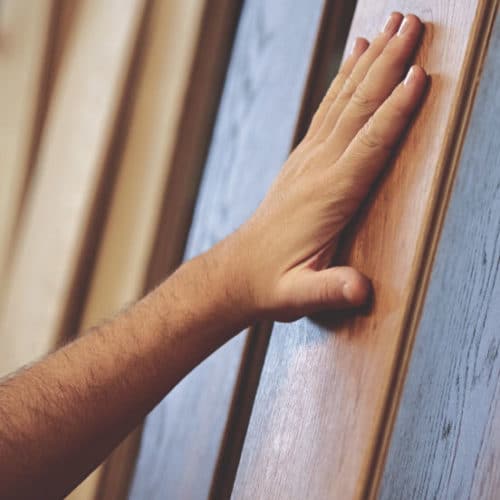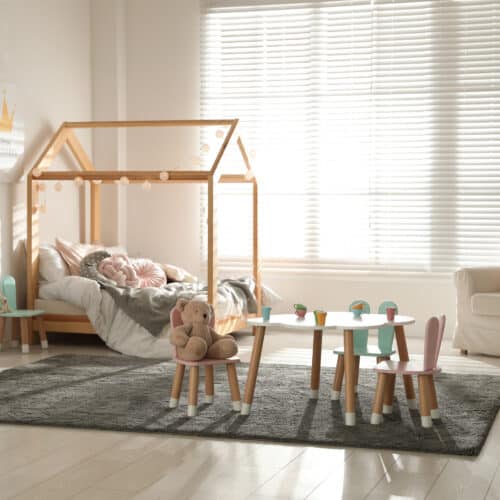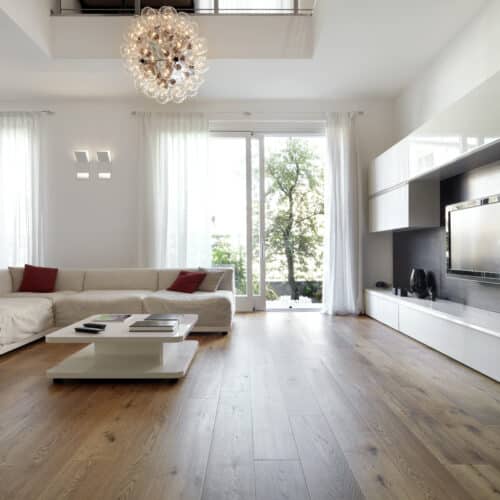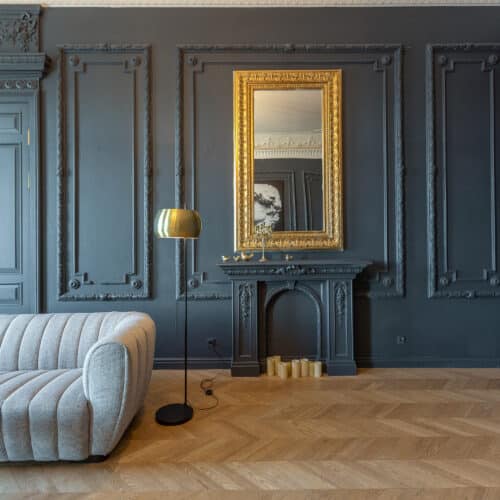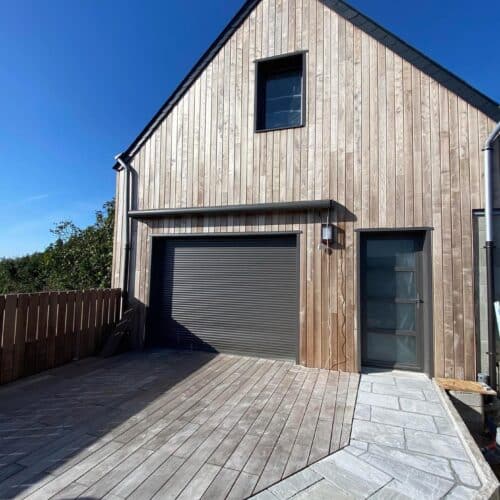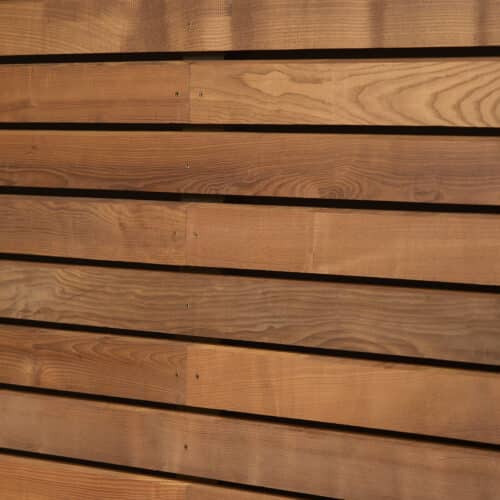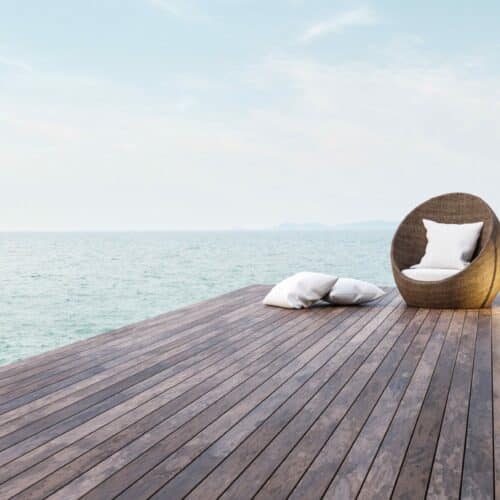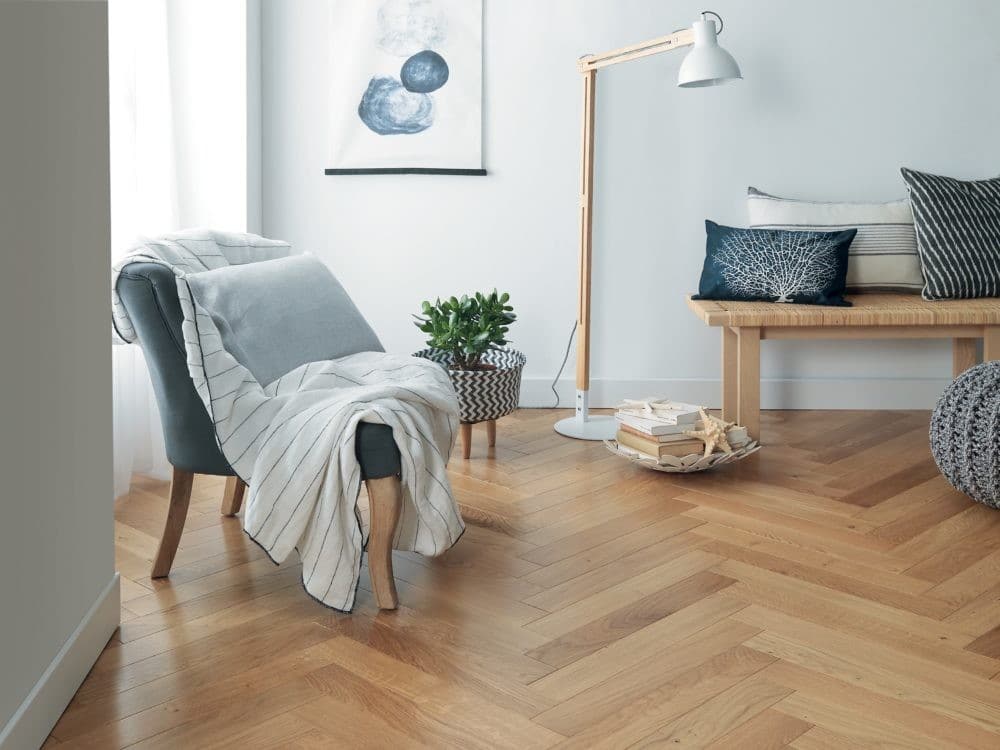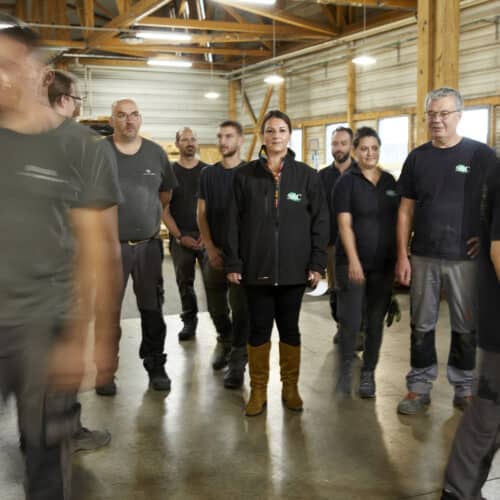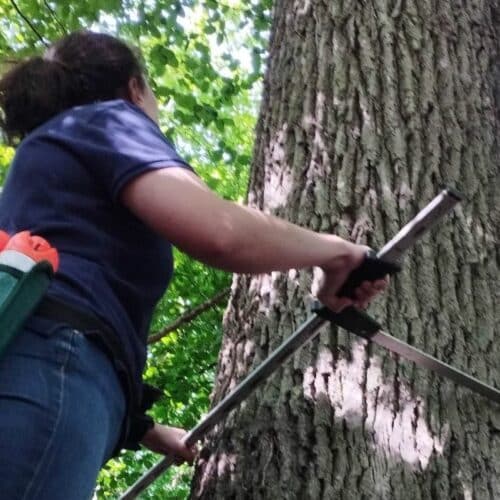1. Bâton rompus, a touch of originality
In the herringbone layout, the boards are arranged at right angles: the short side of one board fits into the long side of the neighboring board. All boards are of the same length, and the installation starts at the center of the room, progressing towards the walls. Peripheral boards are cut to fit.
Key feature: This layout stands out for its originality while being relatively easy to implement.
2. English, the new classic
The staggered layout, also known as “random match,” is the most common. Boards of different lengths are installed in parallel rows, and the joints are irregularly offset. The installation starts in a corner of the room and runs to the opposite wall, with the last board in the row being cut. Be mindful of mixing board lengths and color variations to achieve overall homogeneity.
Key feature: This is the simplest layout to execute.
3. Point de Hongrie, the epitome of elegance
Also known as “chevron,” the herringbone layout is characterized by board ends cut at 45° or 50° to create “pointed” boards. The lengths of the boards, called “point to point” or “point to heel,” are fixed. They interlock at the angle, and the installation starts in the middle of the room. Highly technical, it entails higher manufacturing and installation costs. But what elegance!
Key feature: Originating in aristocratic residences in the 17th century, it became the quintessential pattern of Haussmannian apartments in the 19th century.
4. Ladder pattern, for large rooms
The ladder pattern is achieved with wide and short boards, interspersed with narrower boards laid perpendicularly to form “ladders.” Typically, the vertical boards measure 70 to 90 mm wide, and the boards forming the “rungs” measure 90 to 120 mm wide.
Key feature: This layout allows the use of short-length boards, often more economical to purchase, and is suitable for large rooms.
5. Fougère, the lesser-known
Also known as “basket weave,” the “chevron” layout combines beveled boards with straight borders. However, the oblique boards are finer than in a herringbone, and the vertical ones are often wider than in the ladder pattern.
Key feature: Very original, this layout is less common but provides a beautiful visual effect.
6. Mosaic, the vintage spirit
Mosaic parquet, also known as checkerboard parquet, is made up of square tiles on which solid wood strips are laid. They can be laid straight or diagonally, with or without staggered joints. Very fashionable in the 70s and 80s, they were gradually superseded by the long strips of strip parquet. Today, larger tiles are bringing them back into fashion.
The strong point: it’s easy to create and offers a wide choice of designs.
7. Ship deck, the maritime touch
The “ship deck” layout is primarily intended for bathrooms, but there’s nothing stopping its use in other parts of the house. The narrow boards are separated lengthwise by elastic joints made of polymer sealant, black or colored. Installed in cords, these joints allow the wood to expand and contract without causing issues in a humid environment. The boards must be glued.
Key feature: This layout enables the installation of parquet in a bathroom safely.
